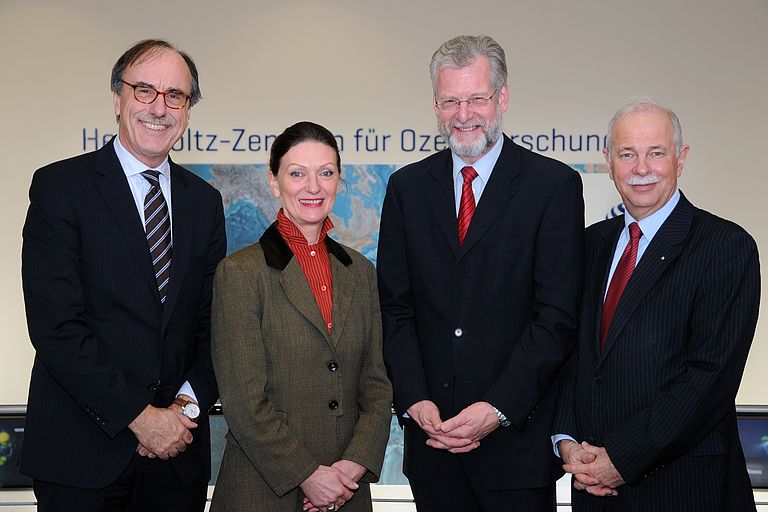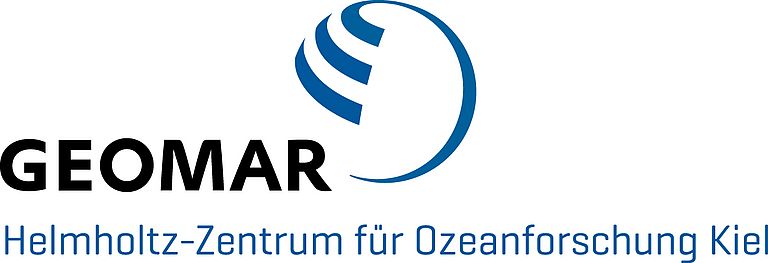Marine Research in Kiel is heading towards new shores
GEOMAR | Helmholtz Centre for Ocean Research Kiel established
Since the beginning of 2012, marine sciences in Kiel, Germany are sailing under a new name and a new look. The former Leibniz Institute of Marine Sciences (IFM-GEOMAR) converted into GEOMAR | Helmholtz Centre for Ocean Research Kiel. The reason is the change of the institution from the Leibniz to the Helmholtz Association, the state of Schleswig-Holstein and the federal government agreed upon in 2010. Now, GEOMAR receives about 90% of its institutional funding by the federal government and the remaining 10% from the state of Schleswig-Holstein. The Helmholtz Association is a community of 18 scientific-technical and biological-medical research centres. These centres have been commissioned with pursuing long-term research goals on behalf of the state and society. GEOMAR contributes with its specific expertise in ocean and deep-sea research to the research field “Earth and Environment” of the Helmholtz Association.
The director of GEOMAR, Professor Peter Herzig, is looking forward to the changes and perspectives of the new centre. “With our research agenda and in particular the technologies for deep-sea research we are unique in the Helmholtz Association”, Professor Herzig explains. “GEOMAR will play a central role in the earth system research in the Helmholtz Association. So far, research on global oceanic processes and deep-sea research was not present in the Helmholtz portfolio”, Herzig continues. Together with the Alfred Wegener Institute for Polar and Marine Research, the German Research Centre for Geosciences, the Helmholtz Centre Geesthacht and the Helmholtz Centre for Environmental Research, GEOMAR forms the basis of the research field “Earth and Environment”.
Although the research agenda of GEOMAR remains basically the same, the move to the Helmholtz Association required a number of significant changes: a new corporate design due to the new name and logo, new or reappointment of all management and advisory boards and fundamental changes in the administration. “Only due to the enormous efforts of our staff, a smooth transition was possible. Even though there are still some open issues, I am very pleased to see how much has already been accomplished. Many thanks to all who have contributed to this successful start”, Herzig stated.
Considerable progress has already been made in the integration of GEOMAR into the Helmholtz Association. “We have already formulated the basis for a proposal in the framework of the programme-oriented funding line of the Helmholtz Association starting 2014. Since this proposal will provide the basic funding for GEOMAR, it is of great importance”, Professor Herzig explains. In addition, some success has already been accomplished in other areas of Helmholtz funding. Amongst them a new Helmholtz Young Investigators Group in the area of gas exchange between ocean ant atmosphere, a German-Russian research group on climate extremes and a professorship in the framework of assuring excellence in the area of Marine Geodynamics. Other proposals have already been submitted or are in preparation.
Of particular importance for GEOMAR is the continuation of the very successful cooperation with the University of Kiel. A first and very important success was the approval of the grant for the second phase of the Collaborative Research Centre (SFB) 754 “Climate Biogeochemical Interactions in the tropical Ocean” of the German Research Foundation (DFG). “The next milestone is the continuation of the very successful cluster of excellence “The Future Ocean” that provided a much broader basis for marine sciences on Kiel”, Professor Herzig states. On the long term, we want to establish an even larger network for marine research with the ‘Kiel Academy of Interdisciplinary Marine Sciences’ (KAIMS)”, Herzig concluded.
Background information Helmholtz Association:
The Helmholtz Association is a community of 18 scientific-technical and biological-medical research centres. These centres have been commissioned with pursuing long-term research goals on behalf of the state and society. The Association strives to gain insights and knowledge so that it can help to preserve and improve the foundations of human life. It does this by identifying and working on the grand challenges faced by society, science and industry. Helmholtz Centres perform top-class research in strategic programmes in six core fields: Energy, Earth and Environment, Health, Key Technologies, Structure of Matter, Aeronautics, Space and Transport.
The Helmholtz Association is Germany's largest scientific research organisation. A total of 31,745 staff work in its 18 scientific-technical and biological-medical research centres. The Association's annual budget amounts to more than €3,4 billion.
Contact:
Dr. Andreas Villwock (Communication & Media), Tel. +49 431 600 2802, avillwock(at)geomar.de
This press release in pdf-format.




